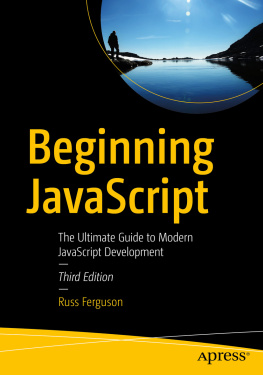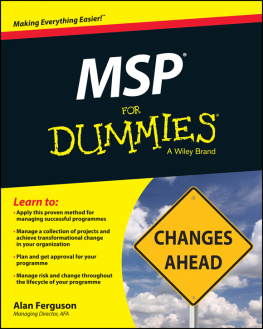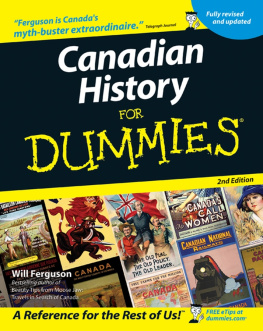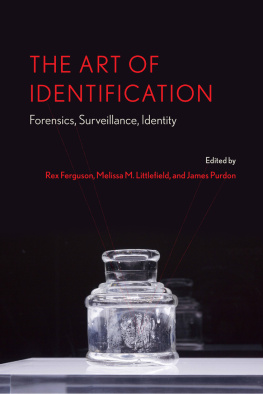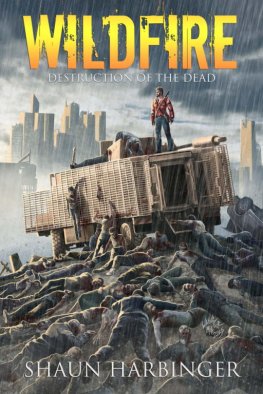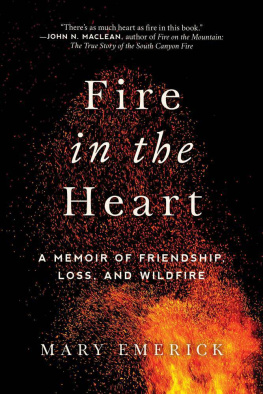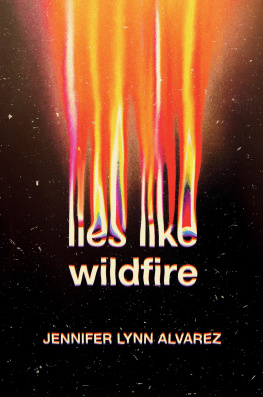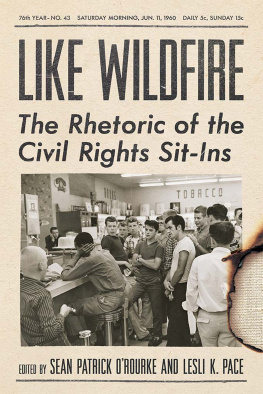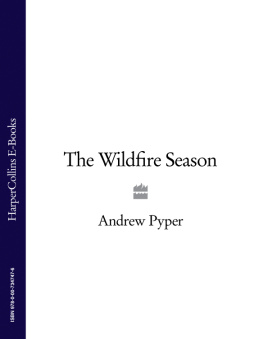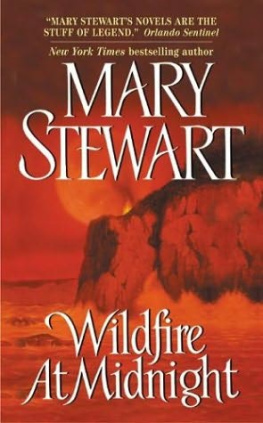
Throughout the West, the first fifteen years of the new millennium saw tremendous growth in the size and force of wildfires. In New Mexico, for example, the Cerro Grande Fire of 2000 destroyed a record 280 homes, and four years later, 242 homes were lost in the Little Bear Fire, shown here, ignited by a lightning strike in the Lincoln National Forest.
LAND ON FIRE
THE NEW REALITY OF WILDFIRE IN THE WEST
GARY FERGUSON
TIMBER PRESS PORTLAND,OREGON
CONTENTS
PROLOGUE
ACROSS MY THIRTY-FIVE YEARS OF WRITING ABOUT THE NATURAL and cultural history of the American Westlogging nearly a quarter million miles of highway and some 30,000 miles of trail along the waywildfire has been a common companion. Ive seen its handiwork all around my longtime home in southern Montana; how its driven new generations of aspen and lodgepole forests in the Beartooth Mountains; and farther to the south, in the outback of Yellowstone, the way its cleaned and pruned the Douglas-fir and Engelmann spruce forests. Flames at my back have sent me scurrying like a startled mouse out of the lonely folds of Hells Canyon, while big burns have eaten beyond recognition some of the landscapes I roamed in my youth: slices of the Sawtooth Mountains of Idaho, the Weminuche Wilderness of Colorado, the southern uplands of Utah.
When I first came to the West as a young man in the late 1970s, wildfire was still seen largely as a destructive force, which of course at times it can still seem today. But across the decades Ive also come to know it as a powerful agent of healing, a mighty wand that wipes the land free of disease and insects and fallen timber to create a stage for healthy, altogether magnificent new flushes of life. By returning essential nutrients to the soil, fire allows a flush of grasses that can provide especially nutritious graze for elk and bison, not to mention food for dozens of species of ground-foraging birds. At the same time, small mammals who feed on the seeds of those grasses tend to increase in number after a burn, in turn providing food for hawks, owls, coyotes, and the like.
Lately, though, Ive also been witness to this land changing, increasingly being wrung dry by severe episodes of drought. And as a consequence, wildfire is establishing itself as a far bigger, much more forceful presence than ever before. In many recent years my neighbors and I have choked on smoke from burning forests, have turned our heads up to the August sky looking for rain until our necks hurt, and on several occasions have packed up a few precious belongings and evacuated our homes, hearts in our throats, in the face of advancing flames. Despite the hubris humans have so often brought to our relationships with the natural world (in the case of wildfire, once believing we could all but eliminate it), fire has proven awfully good at dealing blows to swagger.
What will we do as tens of thousands of acres of conifers, stressed by drought, succumb to infestations of beetles and disease, creating fuel loads that sooner or later will feed massive infernos? How do we control the invasive grasses and shrubs flaring across western landscapes, not only diminishing grazing values but also serving as flash fuses for the rapid spread of wildfire? With annual costs of fire suppression already in the billions, how do we fund not only future firefighting but also the prescription burning and forest-thinning operations needed to reduce the risk of major conflagrations? And even if we do find money for things like prescribed burns, will communities allow them, given growing concerns about air pollution as well as the possibility (though small) that such burns can now and then get out of control? And finally, how will the astonishing webs of life that are now strung across these great landscapesencompassing salamanders and grizzlies, pikas and pinyonsbe changed by the conditions that today allow wildfire such a heavy hand?
Like it or not, today seventy-five million people find themselves living in the western United States in a time of fire. And firelike other big forces of naturedoesnt suffer fools. It has no patience for our stubborn refusals to acknowledge the realities of our time. If we expect to minimize loss and suffering in the decades to come, we need to start making some serious changes to get along better with wildfire, not to mention living in ways that minimize the climate shifts that are making fire an ever more dangerous force.
Maybe the first step is simply to ask questions. To learnfrom the men and women whose lives turn around wildfire, as well as from the land itself. To educate ourselves toward some deeper understanding of how to live intelligently, even gracefully, in what has clearly become a land of flames.

An air tanker drops fire retardant to slow the advance of the Chelan Complex Fire, which consumed nearly 89,000 acres just south of Chelan, Washington, in September 2015.
LIVING FIRE
Not your grandparents landscape
AS MORNING ROLLS ACROSS A SLICE OF PONDEROSA AND Douglas-fir forest in southern Colorado one August day, thin sheets of clouds are dissolving into tatters and then scattering in the wind. More clouds come later, in the heat of the afternoon, some with dark curtains hanging from their bellies, telltale signs of rain; but the air is so warm and dry that no drops reach the ground. Then in midafternoon, a bolt of lightning blasts out of the sky, discharging at the top of a 60-foot ponderosa pine snag on a steep south-facing slope. No one is around to see the hit, the brilliant flash of the lightning bolt carving a channel through the air with such force that when the channel fills again, it creates an ear-shattering boom of thunder.
The dry wood explodes into the surrounding forest, sending a light spray of sparks into the air. As the base of the snag smolders, a thatch of dry fescue grass, strewn with bits and pieces of fallen limbs, begins to burn. Fanned by a gusty windcommon to dry lightning eventsthe flames start to spread. Embers begin to pop and blow. One lands in the shallows of a small creek, fizzling with a soft hiss. Another falls on a slab of granite and burns itself out. But still another flies about 20 feet to land in a patch of cheatgrass and small branches, the latter blown off trees killed in a pine bark beetle infestation.
Thus begins another wildfire in the American West.
IN THE NOT-SO-DISTANT PAST, WHEN WILDFIRES BURNED unrestrained, they played an essential role in shaping the forests. To better comprehend this role, it might help to take a look at one specific kind of forest community, found not only in southern Colorado but also from New Mexico to Montana, west through Idaho and Utah and parts of Nevada to Oregon, Washington, and California. The centerpiece of this community is the ponderosa pine. The ponderosas signature featuresbeautiful cinnamon-colored bark, which on mature trees is thick and furrowed, as well as the trees ability to self-prune, which means dropping its lower branches when they no longer have access to the sunare in fact evolutionary adaptations linked to wildfire. The trees thick bark allows it to withstand flames without suffering damage to the cambium layer (the part of the tree that produces both new bark and wood), while the self-pruning of lower branches keeps ground fires from climbing the tree and killing it by destroying the upper foliagethe crown.
Next page


